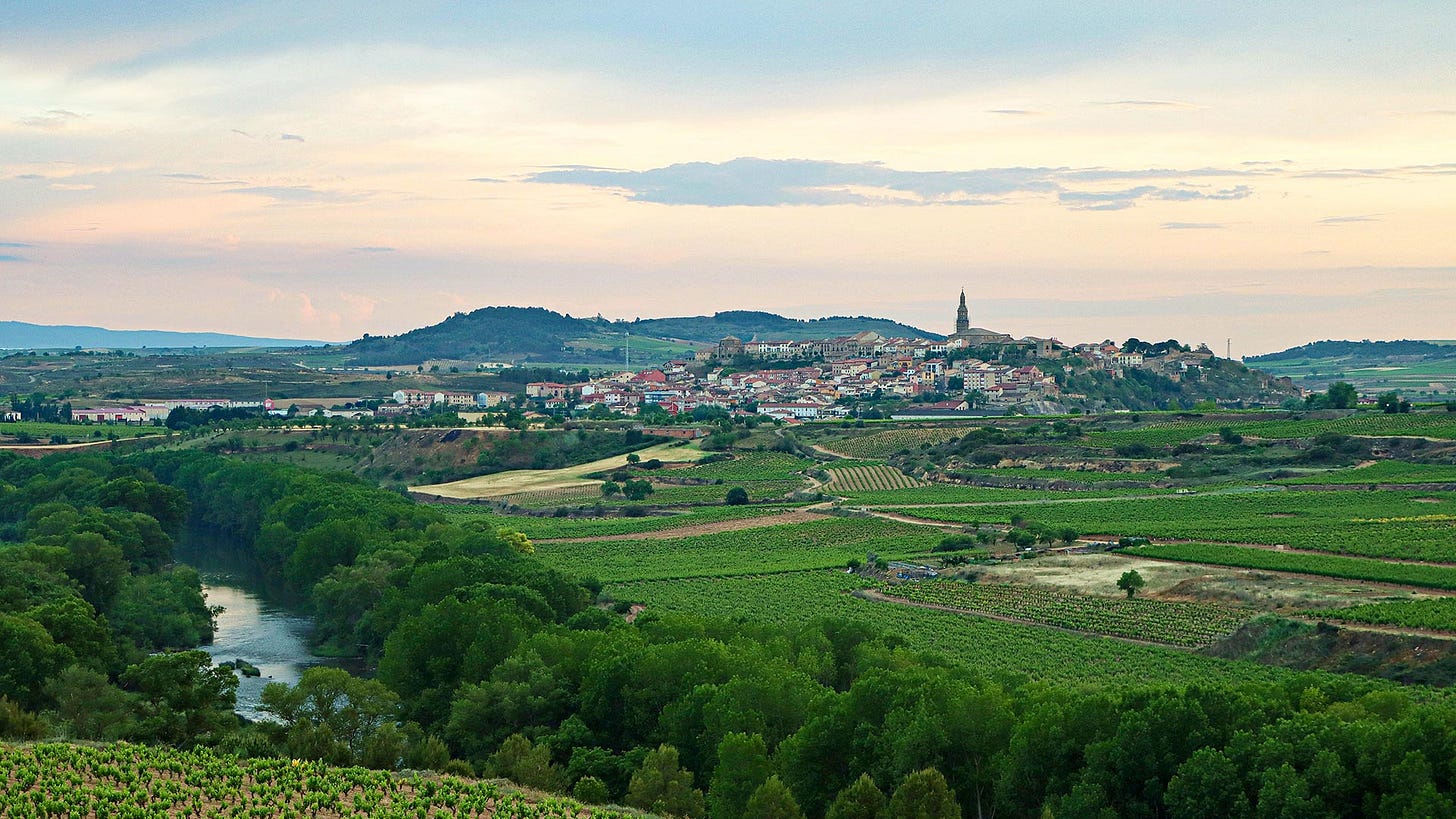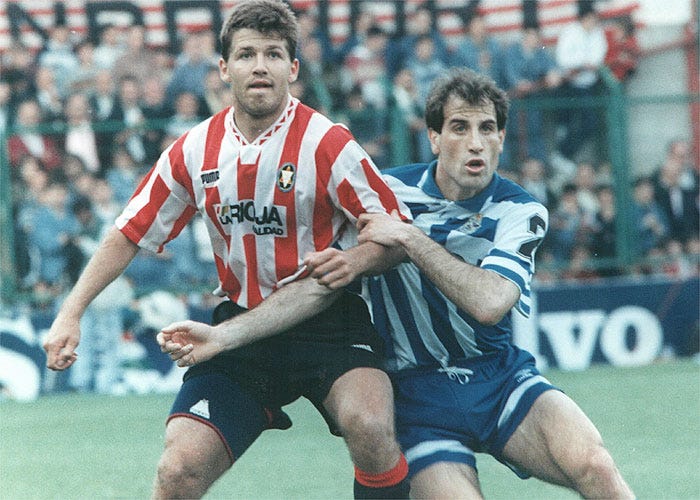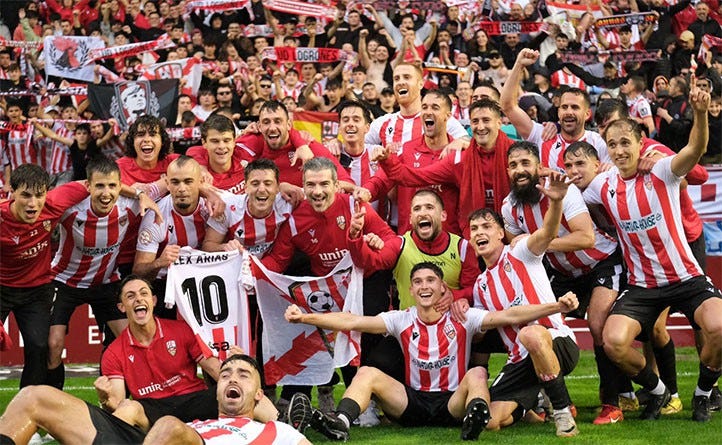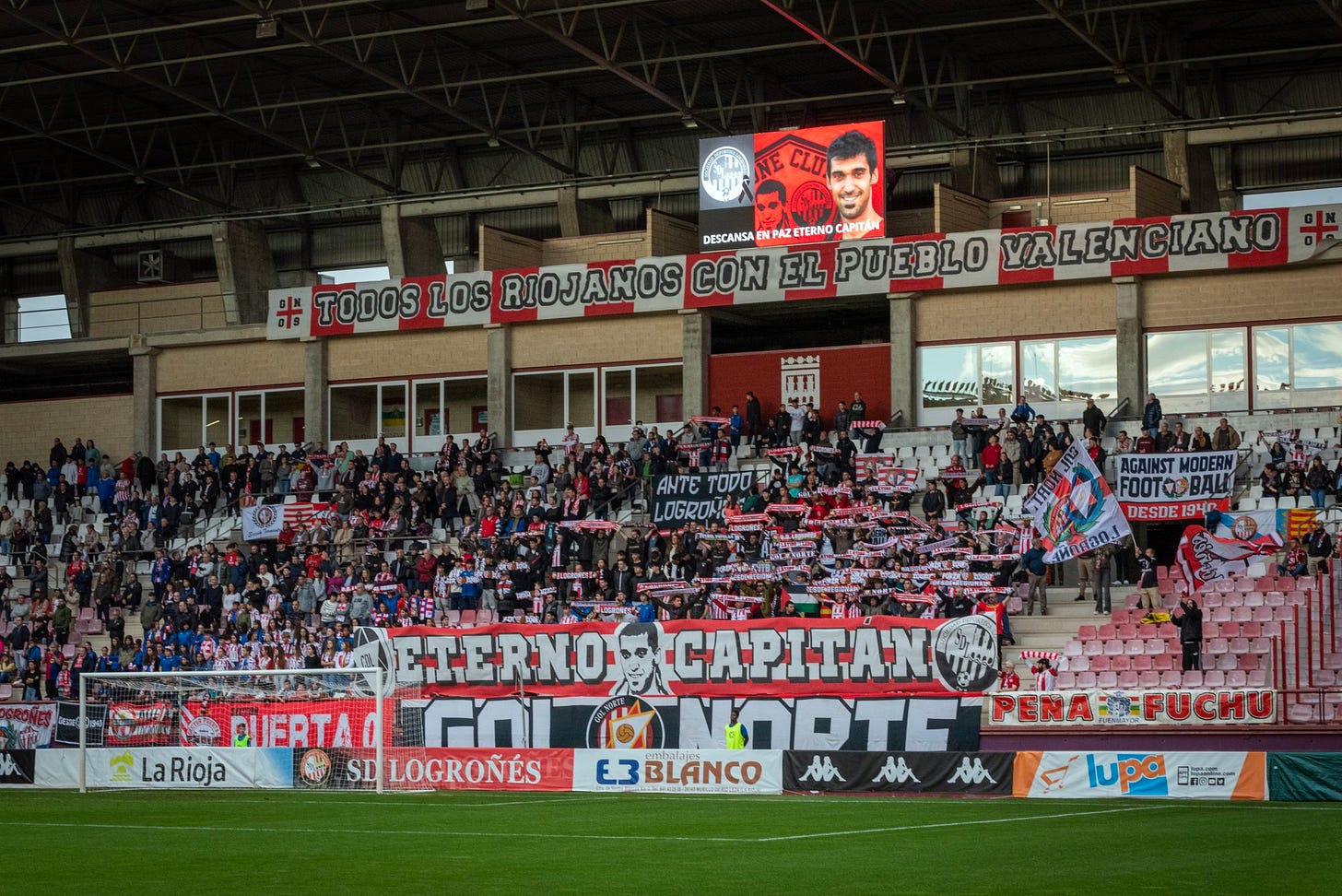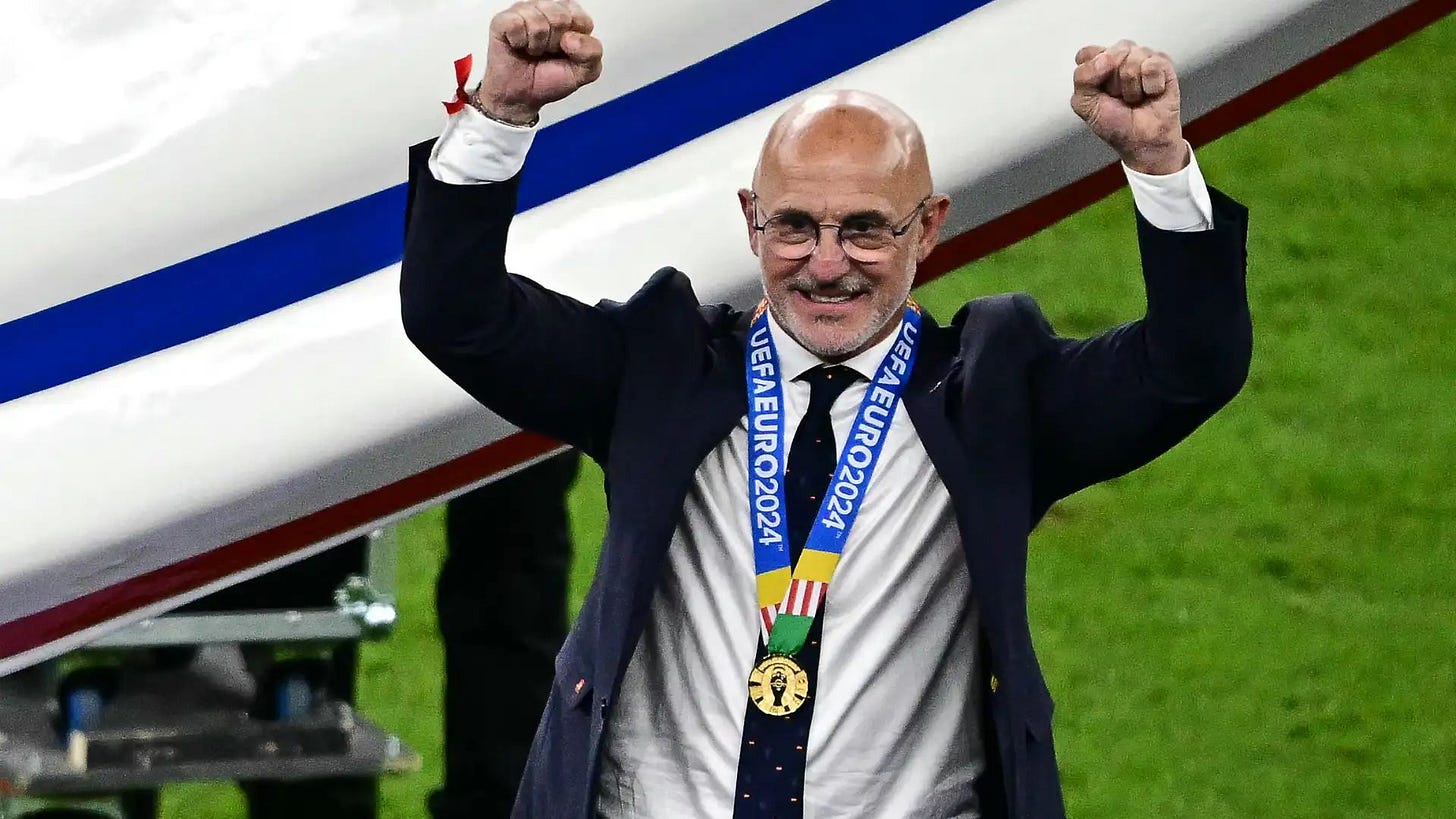State of play: Regions of Spain, La Rioja
Spain is made up of 17 unique and autonomous regions and regional pride is often as big as national pride in what can often feel a fragmented and divided country. This time we look at La Rioja
La Rioja is easily missed on the map, landlocked in between the Basque Country, Navarre, Aragon and Castile and Leon . By size it is the second smallest region of Spain slightly bigger than the Balearic Islands, by population it is the smallest with a population of 324,000.
The region probably lives in many peoples minds without them even realising through the red wine the region produces that is renowned around the world.
The area is rural, plain flat and sparsely populated with many living in Logroño the capital, in fact over half of the 174 councils in the region have a population under 200.
The region is also known for being the birthplace of written Spanish, with two monasteries UNESCO world heritage sites based on the first written records found.
As you can probably tell given the discussion of the rurality of the region and it’s small population it isn’t a force in football but there have been times when La Rioja had La Liga trembling.
A warning for this piece is football in the region has a complicated history with numerous clubs being formed, renamed, bought out and going extinct so at times you will have to try to stick with me as we talk through the clubs in the region.
The Spanish Stoke
There has always been the joke around Messi could he do it on a cold rainy Tuesday night in Stoke with the meaning that Spain was always a nice place to play. Miguel Pereira though gives the case of CD Logroñés and the difficulties big sides faced as they headed up to Las Gaunas in the late 80s and 90s as an equivalent of a Spanish Stoke.
Football had a stop start life in the capital of the region with CD Logroño the first club in the region, they had begun in the third tier in 1929 as La Liga was formed and by 1934 had made it to Segunda.
After just three games in the then regional second tier they retired and with the civil war then in full flow the club ceased to exist.
CD Logroñés began in 1940 and spent most of their first 40 years in the third tier with occasional spells in Segunda. Then in 1984 the club gained promotion to the second tier and after just three seasons in Segunda they came up to La Liga unexpectedly in a season which saw Valencia as Segunda champions.
They became the first team from the region to ever make it to the top flight and they weren’t just cannon fodder. With a team including future La Liga coaches Jose Luis Mendilibar, Quique Setien and Miguel Angel Lotina they consolidated themselves in the top flight.
Teams found Las Guanas, the cramped stadium an intimidating proposition with a passionate fanbase packed in to watch the stars of La Liga come to this small northern city.
Like Icarus though they flew to close to the sun and they got tantalisingly close to qualifying for the UEFA Cup finishing two points off.
That in turn with clubs being turned into limited companies in 1992 led to heavy investment in the team with players such as Oleg Salenko coming in from Russia who would end up at clubs such as Valencia and Rangers and catch the global imagination when he scored 5 goals in a single game at the 1994 World Cup. Salenko also holds a strange record of having played international matches for both Ukraine and Russia.
Alongside big names like Salenko and Setien they had the graft of players such as Tato Abadia who became a club legend with three spells as a player and two as Head Coach of CD alongside a season in charge of successor club SD Logroñés. He still lives in the city now and owns a cheese shop in the city he adopted as home.
Funded by businessmen in the local wine industry, the club spent ever increasing sums with little return as they slowly finished lower and lower down La Liga until they fell through the trapdoor in 1995. The club had massively overspent in these years chasing the dream of establishing themselves in La Liga and the price they would eventually pay would be heavy.
Despite bouncing back immediately to La Liga in the 1995/96 season under a young Juande Ramos, they lasted just one season back in the top flight and on their return to Segunda with increasing financial difficulties found themselves in the bottom half of the second tier.
The club was relegated on the pitch from Segunda in 2000 and off it as well with a double relegation due to the debts. While they gained promotion instantly the club was ever increasingly unstable financially.
While all this was going on the club left the original Campo Las Gaunas for the Nuevo Las Guanas built just a couple of hundred yards away from the clubs historic home, they formally moved in on 28th February 2002.
In the next 8 years the club was twice more relegated to the fourth tier in 2004 and 2008 for financial issues and the club was removed from the third tier in 2008/09 for repeatedly failing to pay players.
The local football federation refused to register the club such were the issues and this signaled the end of the club known as CD Logroñés but not the end of football in the city. What came next was a split in the city with two football teams emerging out of the wreckage of CD.
The upstarts
With CD Logroñés constantly teetering on the edge of financial oblivion in 2000 Club Deportivo Recreación de La Rioja was founded with the intention of being a replacement for Logroñés.
As the originals plodded on through financial crisis after crisis they ended up becoming competitive with CD Logroñés in the third tier.
The club also in that time moved into Las Gaunas given it was owned by the local council and in 2005 changed their name to Logroñés Club de Fútbol.
Unfortunately as the originals headed towards their demise the same could be said for Logroñés Club de Fútbol who bowed out in 2008 after just eight seasons but the complicated story of two sides in the city vying for supremacy was just beginning.
UD Logroñés
With CD Logroñés demise a huge vacuum was left in the city, amazingly a tiny side from the city called Club Deportivo Varea had made it to the third tier. Varea though would never taste life in the third tier as Felix Revuelta a businessman bought the clubs license and replaced them with his newly formed team UD Logroñés in the aftermath of the fall of CD.
The club moved into Las Gaunas and chose the same striped red and white kit as CD, They didn’t though have the rights to CD’s past such as the badge or honours that belonged to fan-run club SD. After years of grinding away in the third tier in 2020 the year of the COVID pandemic they made it to Segunda.
Despite promising moments in Segunda such as a victory away to Real Oviedo and a double over Tenerife they lasted just one season, finishing three points off safety and worse was to come in 2023 as they dropped to the fourth tier.
The club though was not the only show in town or even in Las Gaunas.
SD Logroñés
After all the years of hurt and financial issues when CD Logroñés ceased to exist, a group of fans decided they didn’t want their club in the hands of businessmen again who could lead them to another oblivion.
What makes the story more amazing is the meetings to set up the club were held at gate 0 outside of Las Gaunas. They again chose the red and white stripes in tribute to the original club. Where UD began in the third tier, SD started life in the regional preferente or fifth tier.
The fans decided that they would have no single owner and would instead be a fan-run club that rather than a successor to CD they would be a tribute. That tribute is at the very heart of the club they acknowledge they are 16 years old and the shirts and badge on the shirts represent the old, the clubs identity represents something new.
A rebellion club in many ways with a fantastic fan culture, they’ve spent their 16 years floating between the third and fourth tier.
While the business ran UD have made it to Segunda truth be told SD have never really threatened to get close but they have their club and they’re happy.
SD began life not at Las Gaunas but at Estadio Mundial 82 a 3500 capacity stadium. They have floated at times between both the stadiums but in recent seasons Las Gaunas has become home.
Both clubs have competed in the same leagues in recent seasons and their has been tension off the pitch with both vying for supremacy. This wasn’t always the case, when they first met just a couple of years after both came into existence relations were friendly as you’d expect with two fanbases who shared and supported the same team until a couple of seasons before and stood side by side on the terraces.
Over time and as people have grown up with two clubs in the city that rivalry has grown and become more intense with incidents between the two sets of fans.
Last season saw SD finish second in their regional group to Arenas and miss out on promotion in the play-off semi finals.
With both clubs again in Segunda RFEF (tier 4) we will see two more derbies in Logroño next season.
It’s a fascinating derbi with two clubs with completely opposite ways of how a club should be ran but given the instability of football in the capital the fact both are now in their 16th year is a positive sign.
Both the teams have had their moments, UD making Segunda and SD have caught peoples imagination as a fan run club chronicled in Miguel Pereira’s book Pasion.
Both clubs have proud fanbases and good support, next season though will add extra complexity with DUX Logroño the women’s team in the city gaining promotion to La Liga.
That now means all three major sides in the city are scheduled to play football in Las Gaunas which is a grass pitch next season. How feasible that is and how the pitch will hold up are not easy questions to answer.
Best of the rest
Haro Deportivo have spent most of their history in the fourth and fifth tier but the side from the edge of the Ebro river did make it into the third tier for two seasons.
The city is dominated by the wine indsutry and is right at the very northern tip of the region. Given they’re so far away from Logroño the football teams derbi has been viewed as Mirandes. The two sides often played each other with both in the regional leagues until Mirandes broke through and became a Segunda side.
They are probably best known for playing in the Estadio Luis de La Fuente named after the EURO 24 winning national team coach of Spain.
Players
As hinted at in Haro’s story the national team coach Luis de la Fuente comes from the region but in what is a common story for footballers in the region he came through the ranks of Athletic Club.
Athletic Club had training facilities and camps set up in La Rioja meaning they could tap into talent in the region but a change in how the philosophy was seen has seen this diminish with players from La Rioja no longer being classed as fitting the philosophy.
La Rioja seems to be a grey area for the philosophy and with people moving fluidly between La Rioja and the surrounding regions such as Navarre and the Basque Country, this could lead to better opportunities for the clubs from La Rioja to pick up the players who no longer qualify for Athletic Club.
Fernando Llorente was someone who grew up in the region but he qualified for Athletic Club having been born in Pamplona.
The production line of top level players isn’t high but similar to smaller size regions like Cantabria it is also understandable.
State of play
While the glory days of a team from the region have long gone, that doesn’t mean the region is in a bad period. Given all the turmoil over the years to have two relatively established Segunda RFEF clubs is an achievement in itself and SD look to be pushing on and aiming again for a run at promotion to tier 3.
While the two clubs have opposite philosophies they are co-existing and showing their is still an appetite for football in this region.




